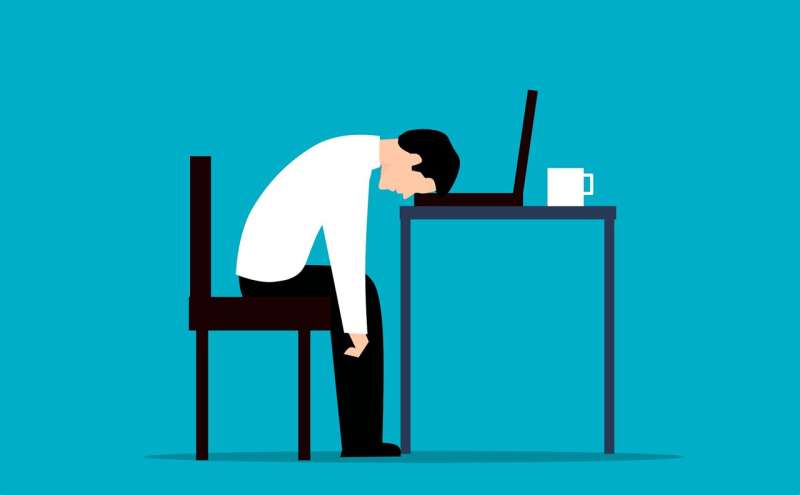
Men working in occupations featuring low demands and low control over their own work situation are at elevated risk for suicide attempts and suicide. In jobs with high demands and high control, the risk is lower. This is shown in a study from the University of Gothenburg.
Men generally find it harder than women to seek help for mental ill-health, and suicide at working age is significantly more common in men. However, knowledge of how suicidal behavior is affected by workplace psychosocial factors is deficient. The purpose of the present register study was to investigate these associations in working males.
The study’s first author is Associate Professor Maria Åberg of Sahlgrenska Academy, University of Gothenburg, a physician specialized in general medicine in Region Västra Götaland’s primary health care organization.
“It’s a terrible family tragedy when someone in mid-life takes their life. It’s also a trauma for co-workers and the whole workplace, and one that has repercussions for many years,” Åberg says.
Higher risk in passive occupations
The study comprises data on 1,483,310 men born between 1950 and 1984 who were conscripted for military service in Sweden in 1968–2002. The data were combined with occupational statistics and data from the National Patient Register and Cause of Death Register.
During the follow-up period (2002–2014), 2,335 suicides, corresponding to a rate of 0.2%, occurred in the group of men aged 30–64. In the same period, suicide attempts numbered 7,334, or 0.5%.
Suicidal behavior was more common among men in “passive occupations,” with low demands and low control, based on available occupational classifications. In this group, 7.8 suicide attempts and suicides per 10,000 people took place annually. Among those in “active” jobs—those with high demands and high control—the corresponding number was 3.0.
Following adjustment for adolescent psychological factors, such as parents’ education, and also IQ and stress resilience, it became clear that the risk for suicidal behavior was 33% higher among working-age men in passive occupations than men in jobs with low demands but high control, who constituted the study’s reference group. Men in the latter (“active”) occupations had a 36% lower risk compared with the reference group.
Participation at work important
People in work situations with high demands but low control, too, were at elevated risk for suicide, albeit not such a high risk as for those in passive occupations. This elevated risk was not explained by a history of psychiatric ill-health during adolescence. In contrast, men whose stress resilience had been low in adolescence more often had passive occupations, and highly stress-resilient men had active jobs, later in life.
A common cause of suicidal behavior (fatal and nonfatal) is depression. Åberg describes suicidal behavior as a complex phenomenon, not always but often involving a process of mental ill-health with many contributing factors.
“We can have a vulnerability from childhood that may also be genetic, and may be linked to excessive alcohol consumption, for instance. And then our job demand–control exposure could be a tipping point,” Åberg says.
“Engaging leadership at the workplace is vital, as is a sense of participation in deciding how we do our work, to boost the feeling of job control.”
The study was published in the Scandinavian Journal of Work, Environment & Health.
Source: Read Full Article